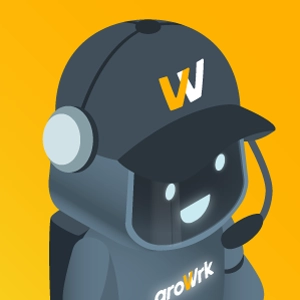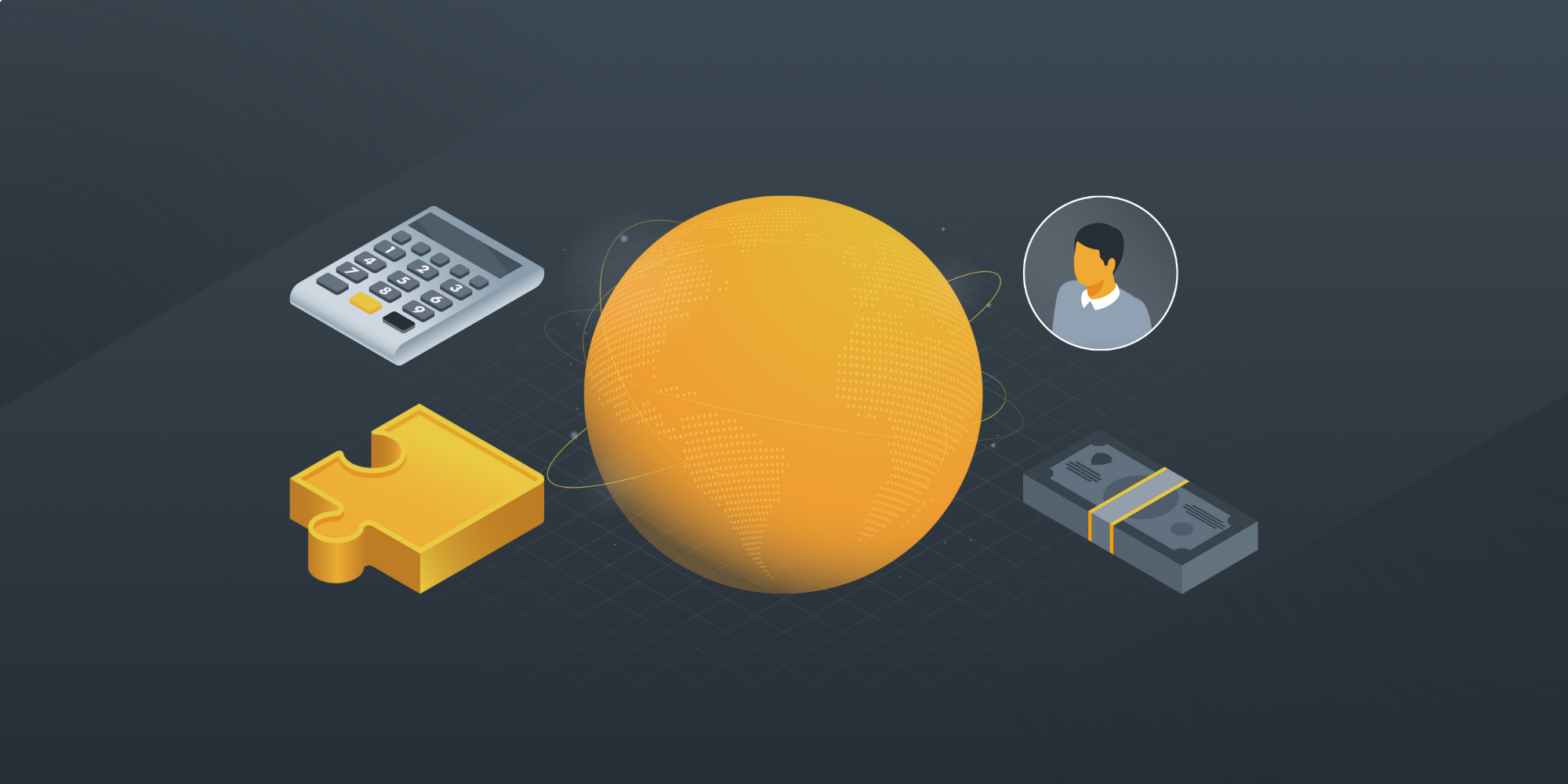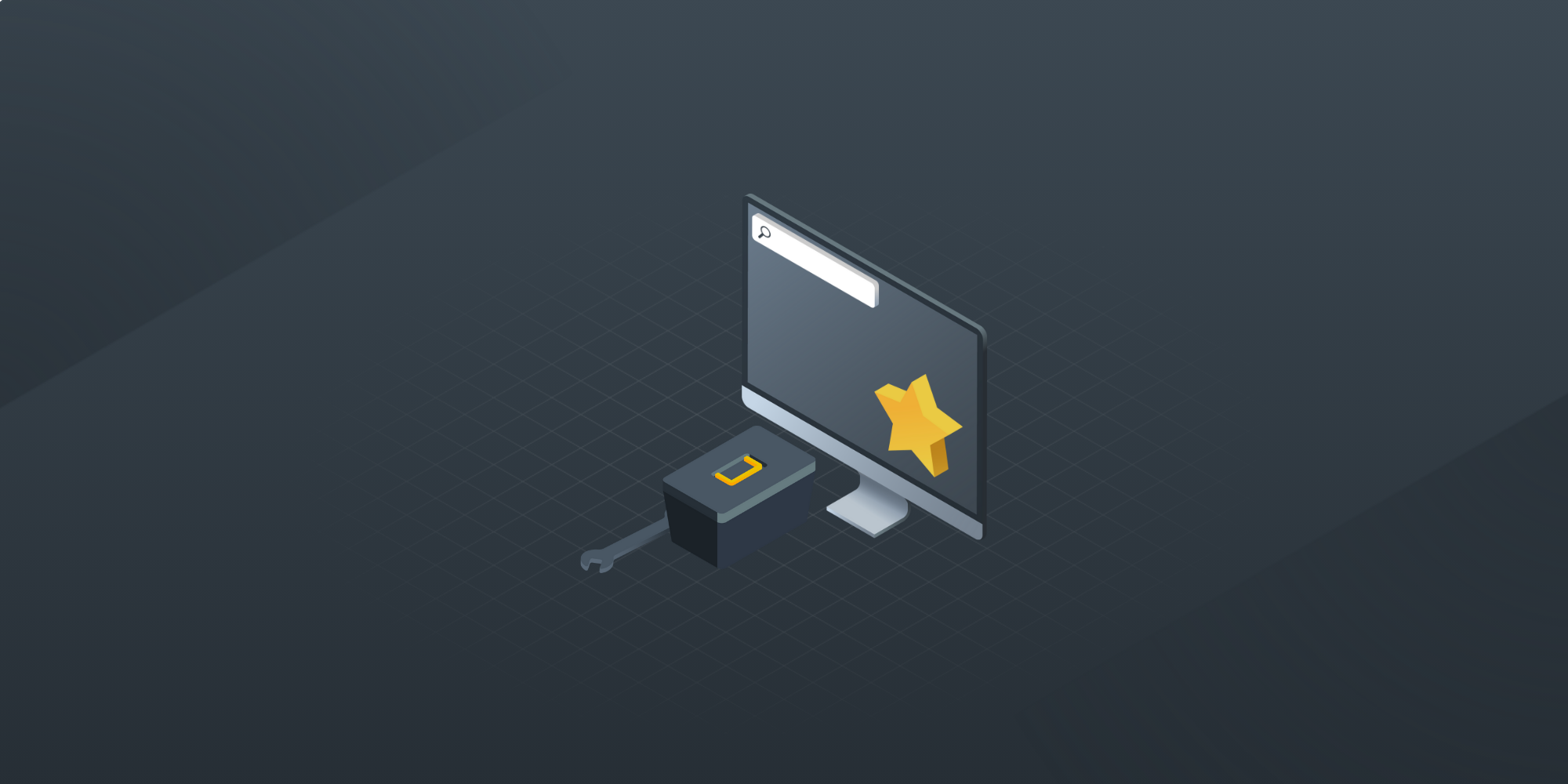When to reassess your IT vendor stack
 GroWrk Team
GroWrk Team
An IT vendor supplies your business with essential tech products and services. All companies, big or small, benefit from efficient IT vendor management through improved operational efficiency, cost savings, and security. Good management of these vendors can save costs and boost efficiency. This article provides top tips for managing IT vendors in 2025, including knowing when to reassess and consolidate vendor relationships.
Key takeaways:
-
Reassess periodically: Regularly reviewing your IT vendor stack is key to aligning with changing business needs such as growth, compliance, or integration requirements to ensure operational efficiency and cost effectiveness.
-
Triggers for review: Common triggers for vendor reassessment are rising costs without added value, poor support responsiveness, scalability issues, lack of data visibility, security/compliance gaps, which can hinder performance if ignored.
-
Vendor consolidation and technology help efficiency: Consolidating vendors and using tools like AI-driven analytics and platforms like GroWrk simplifies IT asset management, improves data security, reduces costs, and supports scalability across distributed operations.
Why IT vendor stacks need periodic reassessment
Treating IT vendor management as a one-time setup or purely a cost-control measure is outdated. In 2025, it's better understood as a form of strategic infrastructure maintenance. Just like you patch servers or upgrade internal systems, your external vendor relationships should be regularly reviewed to ensure they continue to meet your evolving business needs.
As your company grows or pivots, the systems around it change. A vendor that once worked well may no longer offer the scale, integration, or support you need. Whether it’s entering new markets, adopting new tools, or facing stricter compliance standards, those shifts are often a signal that your vendor stack may be due for a refresh.
Common reasons to reassess your vendors include:
-
Expansion into new regions or markets that your current vendors aren’t equipped to support.
-
Consistently poor support or missed SLAs, which erode team productivity.
-
Lack of integration with new systems like HR platforms, finance tools, or IT service management software.
-
Limited visibility into usage, spend, or performance across tools.
-
Compliance and security gaps, especially as regulations tighten or risks evolve.
The goal isn’t to penalize vendors—it’s to ensure that your external partnerships continue to enable your operations, not hinder them.
Recognizing when to reassess your IT vendor stack

Outgrowing a vendor is normal—but ignoring the signs can cost you. As your business evolves, your IT vendor stack must evolve with it. Sticking with outdated or underperforming vendors can slow teams down, introduce unnecessary risks, and inflate costs.
A regular cadence of vendor evaluation—quarterly or bi-annually—helps IT and procurement teams stay ahead of these issues. The goal is to spot misalignment early and take action before it disrupts operations.
Signals it may be time for a vendor review:
-
Rising costs with no added value: Your finance team flags unexplained increases or inflexible pricing during budget reviews.
-
Persistent performance or support issues: Tickets pile up, SLAs are missed, and your team is spending more time chasing fixes than making progress.
-
Workarounds and manual processes: You’ve built patches and side systems to keep things running, often because the vendor’s platform lacks key features or integration.
-
Limited data visibility or reporting: Pulling fundamental insights requires exports, spreadsheets, and manual consolidation, making decision-making slower and less informed.
-
Security and compliance concerns: Vendors can’t provide documentation (like SOC 2) or don’t meet evolving compliance standards.
Waiting until renewal season or a significant issue arises limits your options. Reassessing your stack proactively helps ensure your tools and partners are still supporting—not stalling—your strategy.
Checklist: Signs it’s time to review your vendor stack
| Sign | What to look for | Why it matters |
|---|---|---|
| 1. Delayed issue resolution or poor support SLAs | Tickets take longer to resolve, escalations are mishandled, or SLAs are missed. | Lost productivity and team frustration. A breach of contract if SLAs aren’t being met. |
| 2. Vendor can’t scale with your growth | Delays in provisioning, trouble supporting new locations, or rigid pricing that penalizes scale. | Limits your ability to grow or onboard talent smoothly—creates friction for HR and IT. |
| 3. You’ve built workaround processes | Manual steps, spreadsheets, or third-party hacks to fill feature gaps or integration failures. | These create risk, inefficiencies, and often break when the person who built them leaves. |
| 4. Lack of visibility or reporting | Inability to pull complete reports on IT assets, usage, or vendor performance without manual consolidation. | Makes performance tracking and budgeting harder, limiting strategic decisions. |
| 5. Compliance or security concerns | Missing documentation (e.g. SOC 2), lack of transparency, slow adoption of new protocols. | Non-compliance exposes you to audits, fines, and reputational damage. |
| 6. Costs are rising with no added value | Price increases without product or service improvements; inflexible or punitive pricing models. | You’re paying more but getting less. Costs should correlate with usage and value. |
| 7. Your IT team avoids the tool | Users complain it’s clunky, unreliable, or lacking features. High number of inactive licenses. | Low adoption signals the tool isn’t usable or effective—meaning sunk cost with little ROI. |
SaaS tools and management: Special considerations
-
Overlapping functionality: With dozens of apps in use, it’s common for multiple tools to serve the same purpose—e.g., two project management platforms or three different file-sharing tools. This bloats spend and confuses users.
-
Compliance complexity: The more SaaS tools you use, the more vendors your legal and security teams must vet. Each vendor relationship introduces a new compliance risk—especially when it comes to sensitive employee or customer data.
-
Lifecycle challenges: SaaS tools must be tightly integrated into your onboarding and offboarding workflows. When this process is fragmented, former employees may retain access to critical systems, creating data security risks.
-
Shadow IT: Employees often adopt tools outside of IT’s purview. This leads to security vulnerabilities, uncontrolled spend, and data sprawl across disconnected platforms.
Why centralization matters:
A centralized SaaS management strategy gives IT and finance teams the visibility they need to:
-
Track spend and usage by department or user
-
Control access and enforce offboarding
-
Ensure contractual compliance
-
Identify and eliminate redundant tools
Regular SaaS audits, strong internal policies, and tight vendor controls are essential to protect your stack and budget.
Hardware management and the tech stack
While SaaS tools often get the spotlight, hardware management is a foundational part of any IT strategy—and a major area of vendor oversight. From procurement and inventory to tracking and end-of-life disposal, managing physical devices is critical to ensuring a secure, efficient, and compliant tech environment.
Common hardware management challenges:
-
Procurement delays: Sourcing laptops or accessories for new hires—especially in remote or international locations—can slow onboarding if your vendor lacks global reach or inventory visibility.
-
Compatibility gaps: Hardware that isn’t compatible with your SaaS tools or operating systems leads to inefficiencies, security risks, or extra support tickets.
-
Obsolete equipment: Without a system to track hardware lifecycle status, outdated devices stay in circulation—introducing risk and poor performance.
Why hardware needs to align with your broader tech stack:
When hardware isn’t managed in sync with your software and vendor ecosystem, it creates friction across your organization. Poor asset visibility leads to overspending. Disconnected workflows delay provisioning. And gaps in recovery or disposal processes increase compliance risk.
Integrating hardware management with your vendor strategy enables you to:
-
Streamline device procurement and deployment
-
Gain real-time inventory visibility across regions
-
Automate provisioning, shipping, and retrieval
-
Reduce waste and eliminate shadow IT hardware
-
Ensure secure decommissioning and asset recovery
A cohesive approach to hardware and software vendor management is essential for modern IT operations—especially in hybrid or remote-first environments.
Economic uncertainty and IT Teams: Why agility matters
In periods of economic instability, IT teams face mounting pressure to reduce costs, maintain performance, and safeguard security—often with fewer resources. Agility becomes a strategic advantage, enabling teams to adjust quickly to shifting business conditions without sacrificing service quality.
Why agility is essential during economic downturns:
-
Budgets tighten but expectations remain high—IT must prioritize tools and vendors that deliver measurable value.
-
Security risks increase as threat actors exploit economic uncertainty; outdated or bloated tech stacks become liabilities.
-
Business needs shift quickly, requiring flexible vendor relationships, scalable infrastructure, and fast decision-making.
How agile vendor management supports resilience:
-
Centralizing vendor oversight enables faster assessments, renegotiations, and consolidations when cost-cutting is needed.
-
Consolidating vendors minimizes overhead and improves procurement efficiency—critical when hiring freezes or restructuring limit team capacity.
-
Cross-functional collaboration with finance ensures IT investments align with organizational priorities and compliance requirements.
Agile teams treat vendor management not as a static process, but as an adaptive framework—continuously aligning tech resources with business outcomes. That flexibility is what helps companies weather uncertainty and emerge stronger.
Tactical guidance for reassessing vendors
Reevaluating your vendor stack doesn't have to disrupt business operations. With a structured, proactive approach, you can improve vendor performance and reduce risk—without slowing down your team.
Here are tactical steps to reassess vendors effectively:
| Tactic | Why it matters | What to do |
|---|---|---|
| Schedule regular reviews | Prevents vendor drift and ensures alignment with evolving business needs. | Set quarterly or biannual vendor assessments with IT, finance, and department leads. Document SLAs, issues, and performance trends. |
| Use vendor scorecards | Brings objectivity and clarity to the evaluation process. | Rate vendors on key metrics: support responsiveness, uptime, pricing, ease of use, integration, and user satisfaction. Use these to guide renewals or transitions. |
| Run low-risk pilots | Minimizes disruption when exploring new vendors. | Test alternative solutions with a small team or for a limited use case. Measure performance before scaling. |
| Communicate internally | Reduces resistance to change and builds buy-in across teams. | Share the reasons for reassessment, involve stakeholders early, and show how improvements will support their work. |
| Phase transitions | Lowers the risk of switching vendors all at once. | Gradually migrate departments or workflows. Keep both systems running in parallel where possible until the new solution proves stable. |
This approach reframes vendor reassessment as an opportunity to strengthen operations—not just a procurement task. With clear goals and transparent evaluation criteria, your organization can upgrade its vendor relationships without unnecessary friction.
Building a centralized vendor management approach
.png?width=600&height=300&name=it%20vendor%20(1).png)
Centralizing your vendor management process improves visibility, control, and efficiency across your IT operations. A well-structured approach streamlines performance monitoring, reduces duplication, and simplifies compliance management.
-
Consolidate purchasing data in one system: A centralized repository makes it easier to track IT asset purchases, manage renewals, and identify cost-saving opportunities across teams and regions.
-
Involve IT in the vendor process: Giving IT a seat at the table ensures that purchasing decisions align with technical requirements, security standards, and long-term infrastructure planning.
-
Automate IT resource provisioning: Centralized systems allow you to automate device provisioning, deployment, and retrieval—reducing waste, speeding up onboarding, and improving the employee experience.
-
Simplify compliance and reporting: Housing contracts, certifications, and vendor performance data in one place makes it easier to stay audit-ready and maintain compliance with internal policies and external regulations.
-
Improve vendor oversight and accountability: Central tracking makes it easier to enforce service level agreements (SLAs), monitor vendor performance, and identify when a vendor relationship is no longer delivering value.
Enhancing data security with fewer vendors
Consolidating your vendor stack can significantly improve your organization’s security posture. Fewer vendors mean fewer points of entry and easier oversight of security protocols.
-
Reduced attack surface: Limiting the number of third-party vendors lowers exposure to supply chain attacks and misconfigured integrations.
-
Simplified risk management: With fewer tools to audit and monitor, security teams can better focus on verifying controls, access permissions, and compliance certifications.
-
Centralized security monitoring: A smaller toolset enables unified dashboards, consistent logging, and faster response times across the organization.
-
Improved configuration consistency: Reducing niche and redundant tools helps prevent misalignments and inconsistencies that often lead to vulnerabilities.
-
Responsive policy enforcement: Managing fewer vendors allows security teams to roll out policy changes, updates, and patches more quickly and uniformly.
Leveraging AI and automation in vendor management
AI and automation are transforming how organizations manage vendor relationships—making operations faster, more accurate, and more scalable.
-
Accelerate vendor evaluation: AI quickly analyzes large datasets to match your organization with the most compatible vendors based on performance, pricing, and compliance criteria.
-
Automate manual processes: Tools powered by automation streamline tasks like onboarding, contract reviews, performance tracking, and renewals—freeing up your team for strategic work.
-
Generate actionable insights
AI-driven analytics provide real-time insights into vendor performance, usage trends, and risk exposure so you can make faster, data-backed decisions. -
Predict and prevent disruptions
Advanced models identify potential vendor issues—like late deliveries or SLA violations—before they escalate, allowing teams to act proactively. -
Improve compliance monitoring
Automated systems can continuously monitor whether vendors are meeting regulatory and security requirements, reducing audit preparation time.
.png?width=600&height=300&name=it%20vendor%20(2).png)
Consolidating vendors reduces complexity and delivers measurable financial benefits across your IT operations.
-
Lower licensing and maintenance costs: Fewer platforms mean fewer software licenses to manage and maintain—cutting recurring expenses significantly.
-
Reduce management overhead: Managing fewer vendors lightens the workload for IT, finance, and procurement teams, freeing them up for higher-value tasks.
-
Eliminate redundant tools: Consolidation helps identify overlapping tools and eliminate duplication—removing hidden costs in your tech stack.
-
Improve contract leverage: Focusing spend with fewer strategic partners strengthens your negotiating position, often unlocking volume discounts or bundled services.
-
Streamline training and support: Standardizing tools across teams reduces training time, simplifies support processes, and cuts costs related to user onboarding and troubleshooting.
Why GroWrk is the strategic IT vendor for modern teams
Traditional IT vendors weren’t built for globally distributed teams. They struggle with remote provisioning, international compliance, and visibility across multiple regions. GroWrk is purpose-built to solve those challenges—giving IT, ops, and procurement teams a single platform for managing devices, vendors, and logistics at scale.
Here’s how GroWrk strengthens your IT vendor strategy:
-
Unified global platform
Replace scattered local vendors with one centralized system that tracks and manages all IT assets—across countries, time zones, and teams. -
Full lifecycle visibility
Know exactly what devices are in use, where they are, and who’s responsible for them—with real-time asset status and audit trails from procurement to disposal. -
Automated provisioning and offboarding
Trigger device shipping, retrieval, and recovery workflows automatically through integrations with your HRIS and MDM tools—no spreadsheets or email chains needed. -
Global reach with local execution
Ship laptops, monitors, and accessories to over 150+ countries with local warehousing, customs support, and region-specific compliance—backed by a 99.5% delivery SLA. -
Integrated with your stack
Connect GroWrk with your HR, finance, and IT systems to automate onboarding, budget tracking, and device assignment—all within your existing workflows. -
Secure, compliant operations
Meet SOC 2, GDPR, and other regulatory standards with encrypted asset tracking, structured retrievals, and automated data sanitization.
Tired of chasing vendors and tracking assets manually? Schedule a demo with GroWrk and modernize your IT operations—no matter where your team is.
Frequently asked questions
Why is it important to reassess the IT vendor stack regularly?
It's crucial to regularly reassess your IT vendor stack to align with evolving business needs and technological advancements, which helps avoid operational inefficiencies and reduces unnecessary costs.
What are common triggers for vendor reassessment?
Vendor reassessment is often triggered by budget constraints, expansion into new areas, or inadequate support from third-party vendors. Addressing these issues can help ensure sustained partnership effectiveness.
How can vendor consolidation enhance data security?
Vendor consolidation enhances data security by reducing the number of third-party providers, which minimizes the attack surface and lowers the risk of supply chain attacks. This streamlined approach also simplifies management and oversight, further safeguarding your data.
What role does AI play in vendor management?
AI significantly improves vendor management by enhancing vendor matching, delivering actionable performance insights, and anticipating potential disruptions, resulting in greater efficiency.
How does GroWrk help in managing IT vendor relationships?
GroWrk effectively manages IT vendor relationships by providing innovative solutions for IT asset management that enhance scalability and efficiency. This enables organizations to optimize their vendor strategies and strengthen their partnerships.



.png)

